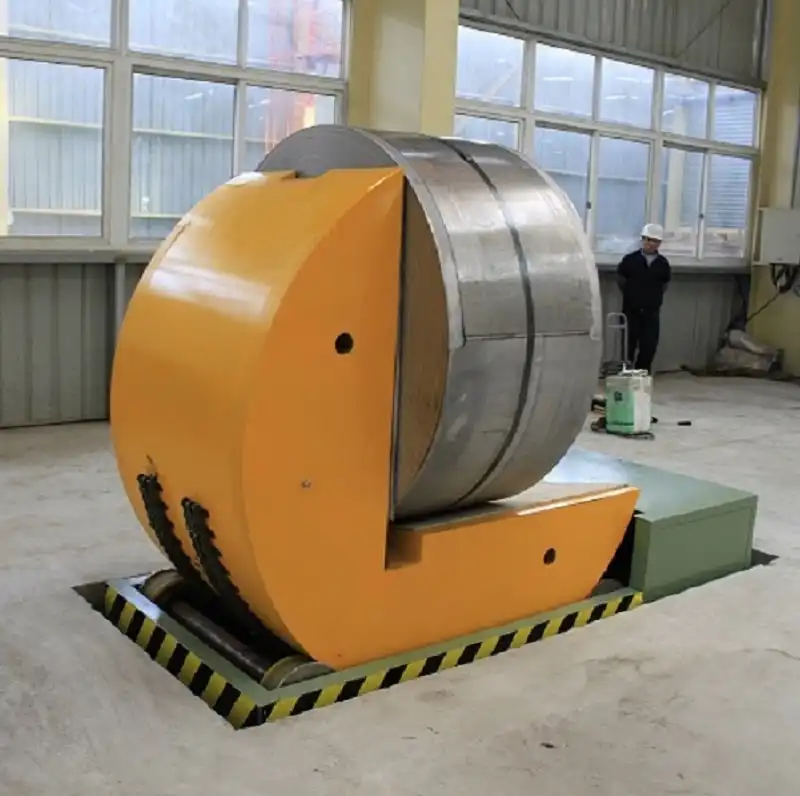
When evaluating the potential investment in a coil upender, the decision extends significantly beyond the initial purchase price. Calculating the true cost of ownership requires a comprehensive look at various factors, including ongoing maintenance, operational efficiency impacts, safety enhancements, and even long-term resale value. What might seem like a straightforward equipment acquisition is, in reality, a strategic decision with far-reaching effects on operational workflow, safety protocols, and the bottom line.
While the price tag of a coil upender or coil tilter warrants careful consideration, its value proposition often lies beneath the surface. This specialized equipment can be a pivotal addition to material handling processes, substantially boosting both productivity and workplace safety – benefits not always immediately apparent in simple financial projections. However, like any significant piece of industrial machinery, owning a coil upender involves ongoing commitments and potential hidden costs that must be meticulously factored into any return on investment (ROI) analysis.
Acquiring and operating a coil upender delivers tangible and intangible advantages, but a holistic assessment is crucial. Let's delve into the elements that determine whether this investment aligns with your operational needs and financial strategy by dissecting the true costs involved over the equipment's lifecycle.
[Claim: Understanding the complete cost lifecycle of a coil upender, from purchase to potential resale, is key to making an informed and strategically sound investment decision.]
Summary Table: Evaluating the True Cost of Coil Upender Ownership
| Factor | Description | Cost Impact / Benefit |
|---|---|---|
| Upfront & Ancillary Costs | Includes base purchase price, shipping, installation, foundation/electrical prep, operator training, and commissioning fees. | High Initial Capital Outlay |
| Operational Efficiency & Productivity | Accelerates coil handling, reduces cycle times, minimizes bottlenecks, enables smoother workflow, and potentially increases throughput. Enhances safety by reducing manual handling. | Significant Long-Term Cost Savings & Productivity Gains |
| Routine Maintenance Expenses | Costs for scheduled inspections, lubrication, hydraulic fluid checks/changes, wear parts replacement (e.g., bearings, belts), and preventive upkeep to ensure reliability. | Ongoing, Predictable Operating Cost |
| Unexpected Repairs & Downtime | Expenses related to unscheduled breakdowns (e.g., hydraulic failures, electrical issues, structural wear) and the associated loss of production during repair periods. | Variable, Potentially High Cost; Mitigated by Maintenance |
| Safety Enhancements | Reduces risks associated with manually tilting or repositioning heavy coils, potentially lowering insurance premiums and costs related to workplace injuries. | Indirect Cost Savings & Improved Worker Well-being |
| Resale Value | Potential recovery of capital upon selling the used equipment. Value depends heavily on brand reputation, condition, maintenance history, and market demand. | Potential Future Return; Offsets Initial Investment |
| Total Cost of Ownership (TCO) | The aggregate of all costs and benefits over the asset's lifespan. Long-term value hinges on utilization rate, maintenance diligence, and strategic fit within operations. | Balanced Assessment of Lifetime Value |
This table outlines the multifaceted financial and operational considerations essential for accurately assessing the total cost and benefit of integrating a coil upender into your workflow.
1. Analyzing Upfront and Hidden Ownership Costs
1.1. Uncovering Initial Purchase and Ancillary Costs
When initially researching coil upenders, the purchase price is the most obvious financial hurdle. Costs can vary dramatically based on factors such as:
- Capacity: Higher weight limits generally mean higher costs.
- Size and Configuration: Custom dimensions or specific platform designs influence price.
- Power Source: Hydraulic vs. mechanical systems can differ in cost.
- Features: Automation level, controls sophistication (e.g., PLC integration, remote operation), and safety interlocks add to the price but can enhance long-term value.
Beyond the sticker price, it's crucial to budget for ancillary costs. These often include freight/shipping, installation services (which may require specialized riggers), potential foundation preparation or reinforcement, electrical hookups, and comprehensive operator training. Neglecting these secondary expenses can lead to significant budget overruns.
1.2. Identifying Less Obvious "Hidden" Costs
The hidden costs associated with coil upenders often emerge post-purchase. Energy consumption is a key factor; a frequently used, high-capacity upender can noticeably impact electricity bills. Facility modifications might be needed to accommodate the machine's footprint and ensure safe operating clearances. Furthermore, initial setup might require dedicating personnel time away from other tasks, representing an indirect cost. Thorough site assessment and planning before purchase can help anticipate and mitigate these hidden expenses.
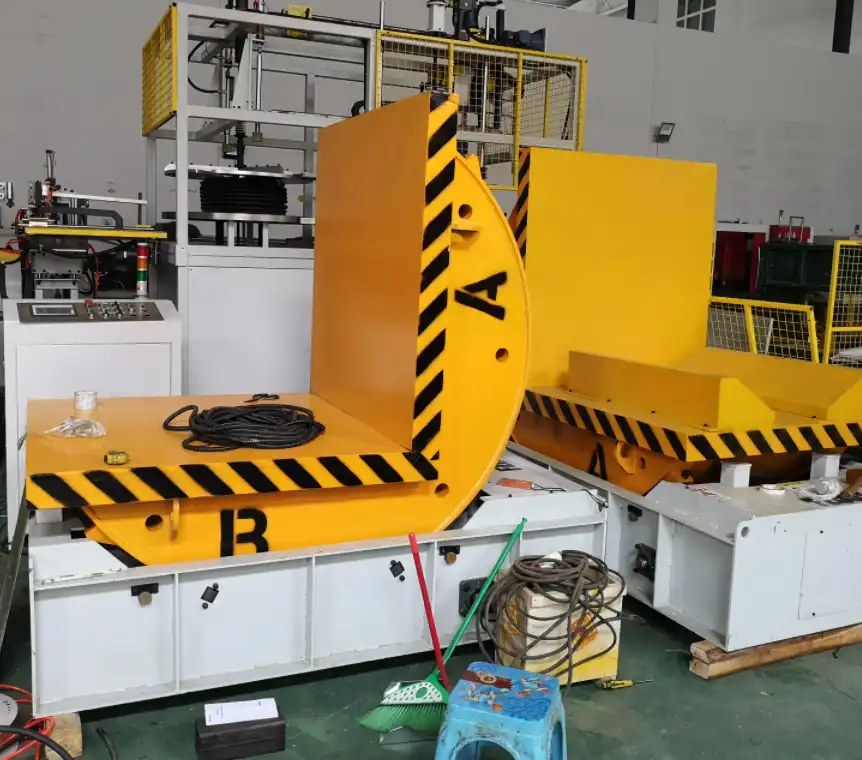
1.3. Balancing Immediate Investment Against Long-Term Gains
Focusing solely on minimizing the initial purchase price can be shortsighted. Investing in a higher-quality, perhaps more expensive, coil upender might yield substantial long-term benefits. These can include greater durability leading to lower maintenance costs, enhanced energy efficiency reducing operational expenses, and superior safety features minimizing risks. Evaluating the upfront investment requires forecasting its impact on total operational costs and potential productivity gains over the machine's expected service life. This Total Cost of Ownership (TCO) perspective provides a more accurate picture of the investment's true value.
2. How Does a Coil Upender Boost Operational Efficiency?
2.1. Streamlining Operations Through Reduced Handling Times
A primary advantage realized with a coil upender is the significant reduction in coil handling time. Tasks like rotating heavy coils from eye-to-sky to eye-to-horizontal (or vice versa), which previously involved cumbersome manual methods, cranes with specialized rigging, or multiple forklift maneuvers, can often be accomplished much faster and more safely with an upender. This efficiency gain directly translates into shorter cycle times for processes requiring coil repositioning. For instance, handling time per coil might drop by 50% or more, depending on the previous method.
2.2. Enhancing Safety and Reducing Manual Strain
Beyond speed, coil upenders drastically improve workplace safety. Manually handling or improperly rigging heavy coils poses significant risks of crush injuries, strains, and coil damage. By automating the tilting process, upenders minimize direct human interaction during the most hazardous phases of repositioning. This reduction in manual handling aligns with safety best practices (e.g., those outlined by OSHA regarding materials handling) and can lead to fewer workplace accidents, reduced workers' compensation claims, and lower insurance premiums – substantial indirect cost savings.
2.3. The Ripple Effect: Improving Overall Productivity and Flow
The efficiency gains from faster, safer coil handling create a positive ripple effect throughout the production line. By reducing or eliminating bottlenecks at the coil receiving or processing stages, the entire workflow becomes smoother. This allows downstream equipment (like slitters, presses, or packaging lines) to operate more consistently and closer to their optimal capacity. Improved flow contributes to higher overall equipment effectiveness (OEE), enabling facilities to meet production targets more reliably and potentially increase throughput without adding shifts or personnel.
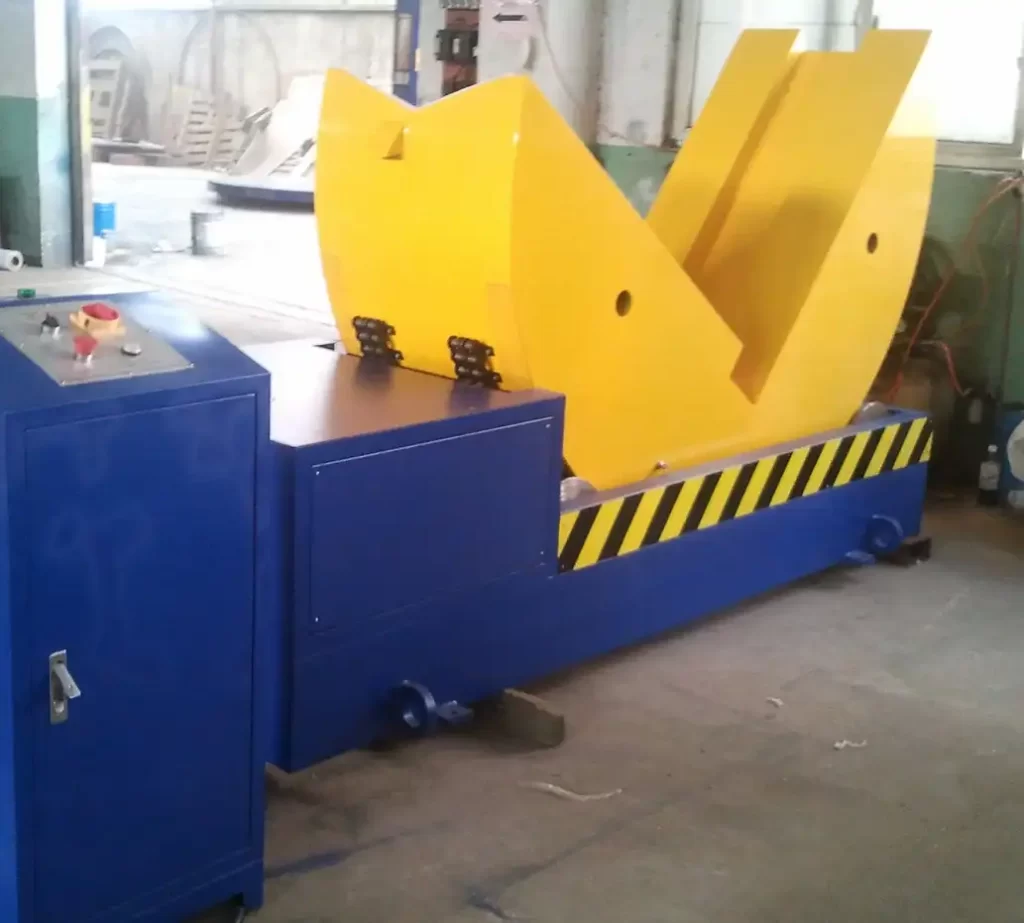
2.4. Quantifying Efficiency's Contribution to ROI
When evaluating the long-term financial impact, the coil upender's contribution to operational efficiency is paramount. By calculating the value of saved labor hours, reduced errors, minimized product damage during handling, and increased throughput, businesses can quantify how these efficiency gains directly offset the initial purchase price and ongoing costs. The ROI becomes more compelling as the frequency of coil handling increases; operations that reposition coils multiple times per shift will see a faster payback compared to those with infrequent usage.
3. What Maintenance Requirements and Costs Should Be Anticipated?
3.1. Budgeting for Routine Upkeep and Component Replacement
Owning a coil upender necessitates an ongoing commitment to maintenance to ensure safe and reliable operation. Like all industrial machinery, regular upkeep is non-negotiable. Key routine tasks typically include:
- Lubrication: Regular greasing of bearings, gears, and pivot points per manufacturer specifications.
- Hydraulic System Checks: Inspecting fluid levels, checking for leaks, changing filters, and monitoring pressures (for hydraulic models).
- Mechanical Inspections: Checking belts, chains, gears, and structural components for wear or damage.
- Electrical System Review: Inspecting wiring, controls, sensors, and safety interlocks.
- Cleaning: Keeping the machine free of debris that could interfere with operation or hide potential issues.
Budgeting for replacement parts (like seals, hoses, filters, bearings) and maintenance labor (in-house or contracted) is essential for calculating the true operating cost.
3.2. Planning for Long-Term Wear and Unexpected Repairs
Despite diligent preventive maintenance, long-term wear and tear are inevitable. Components will eventually reach the end of their service life. Furthermore, unexpected breakdowns can occur. Hydraulic system failures (pump, cylinder, hoses) or electrical component malfunctions (motors, sensors, control panel) can lead to significant repair bills and costly downtime. Establishing a contingency fund for major repairs and maintaining relationships with qualified service technicians or the equipment manufacturer is prudent financial planning.
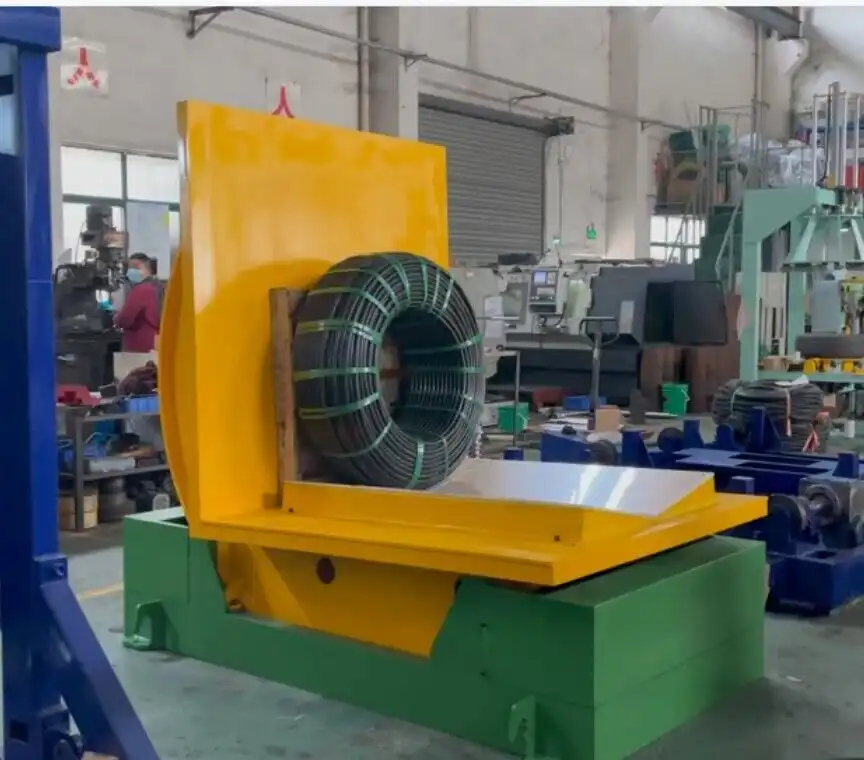
3.3. The Cost of Downtime vs. Proactive Maintenance Investment
The crucial calculation involves comparing the cost of a robust preventive maintenance program against the potential cost of unscheduled downtime. Every hour a critical piece of equipment like a coil upender is non-operational, it can halt or significantly slow production, leading to missed deadlines, idle labor, and lost revenue that often dwarf the cost of proactive upkeep. Investing in regular maintenance, adhering to manufacturer recommendations, and potentially utilizing condition monitoring technologies minimizes the risk of catastrophic failures and ensures the upender remains a reliable asset. Consulting resources on preventive maintenance best practices can further refine your strategy.
4. Is Considering the Resale Value a Factor in TCO?
4.1. Understanding Depreciation and Market Demand for Used Upenders
While not always a primary consideration during purchase, the potential resale value of a coil upender can impact its overall lifecycle cost. Like most capital equipment, upenders depreciate over time. However, the rate of depreciation varies. Factors influencing resale value include:
- Brand Reputation: Well-known manufacturers with a history of reliability often command higher resale prices.
- Condition: A machine in excellent working order with minimal cosmetic damage is more valuable.
- Maintenance History: Verifiable records of regular, professional maintenance significantly boost buyer confidence and value.
- Technology/Features: Models with modern controls or desirable features may retain value better than basic or outdated units.
- Market Demand: Current economic conditions and industry demand for specific types or capacities of used upenders play a role.
Researching the used equipment market for similar models can provide a rough estimate of potential future value.
4.2. Maximizing Potential Resale Value Through Diligent Care
The single most important factor in maximizing resale value is meticulous maintenance and care throughout the ownership period. Keeping detailed service logs, addressing repairs promptly with quality parts, maintaining the machine's cleanliness, and ensuring all safety features are functional will make the upender far more attractive to potential buyers (such as other fabrication shops or used machinery dealers). Investing in proper upkeep is therefore not just about operational reliability, but also about preserving the asset's residual value.
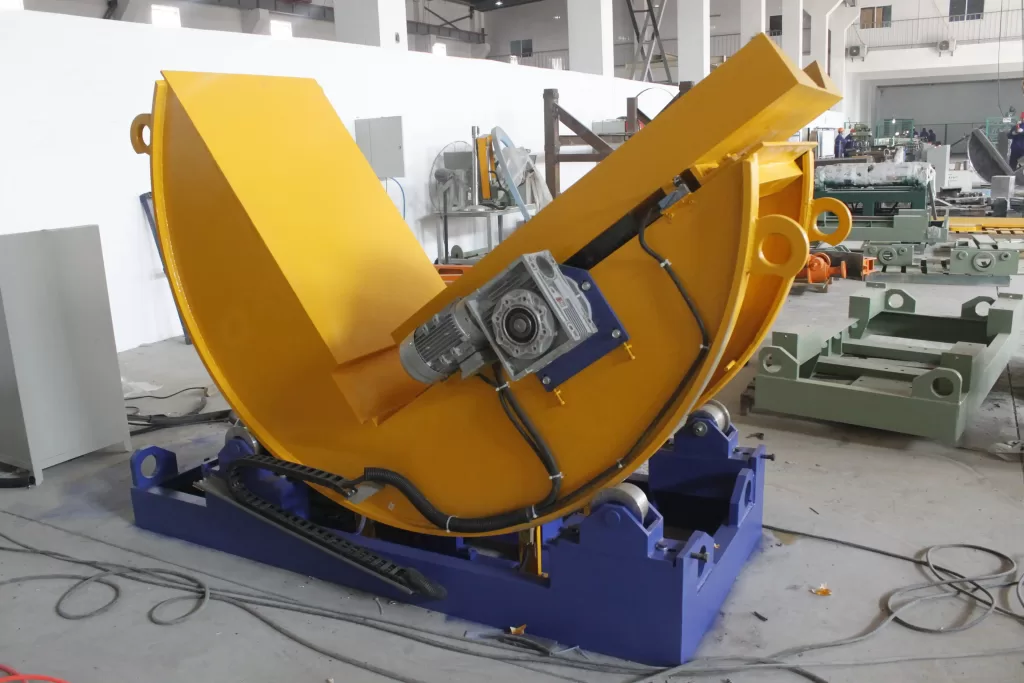
4.3. Incorporating Resale Potential into Long-Term Cost Calculations
For businesses that anticipate needing the upender for a finite period or may upgrade in the future, factoring potential resale value into the TCO calculation is strategically sound. While it won't negate the initial investment, recovering a portion of the cost upon disposal improves the overall financial picture. Knowing that a well-maintained, reputable machine holds residual value can provide confidence in opting for a higher-quality model initially, viewing it not just as an expense, but as an asset with potential for future capital recovery.
Conclusion: Weighing the Complete Cost Equation
Ultimately, determining the true cost of owning a coil upender requires looking far beyond the initial purchase price. A comprehensive analysis must weigh the upfront investment and ongoing maintenance expenses against the significant benefits of enhanced operational efficiency, improved workplace safety, and potential future resale value. For operations involving frequent or hazardous coil handling, the long-term gains in productivity, risk reduction, and smoother workflow often justify the investment in a high-quality, reliable coil upender. While ancillary and ongoing costs demand careful budgeting, they are frequently offset when the machine's full contribution to operational excellence and safety is considered within the Total Cost of Ownership framework.
[Claim: A thorough evaluation encompassing all lifecycle costs and operational benefits reveals the true value proposition of a coil upender, transcending its initial sticker price.]
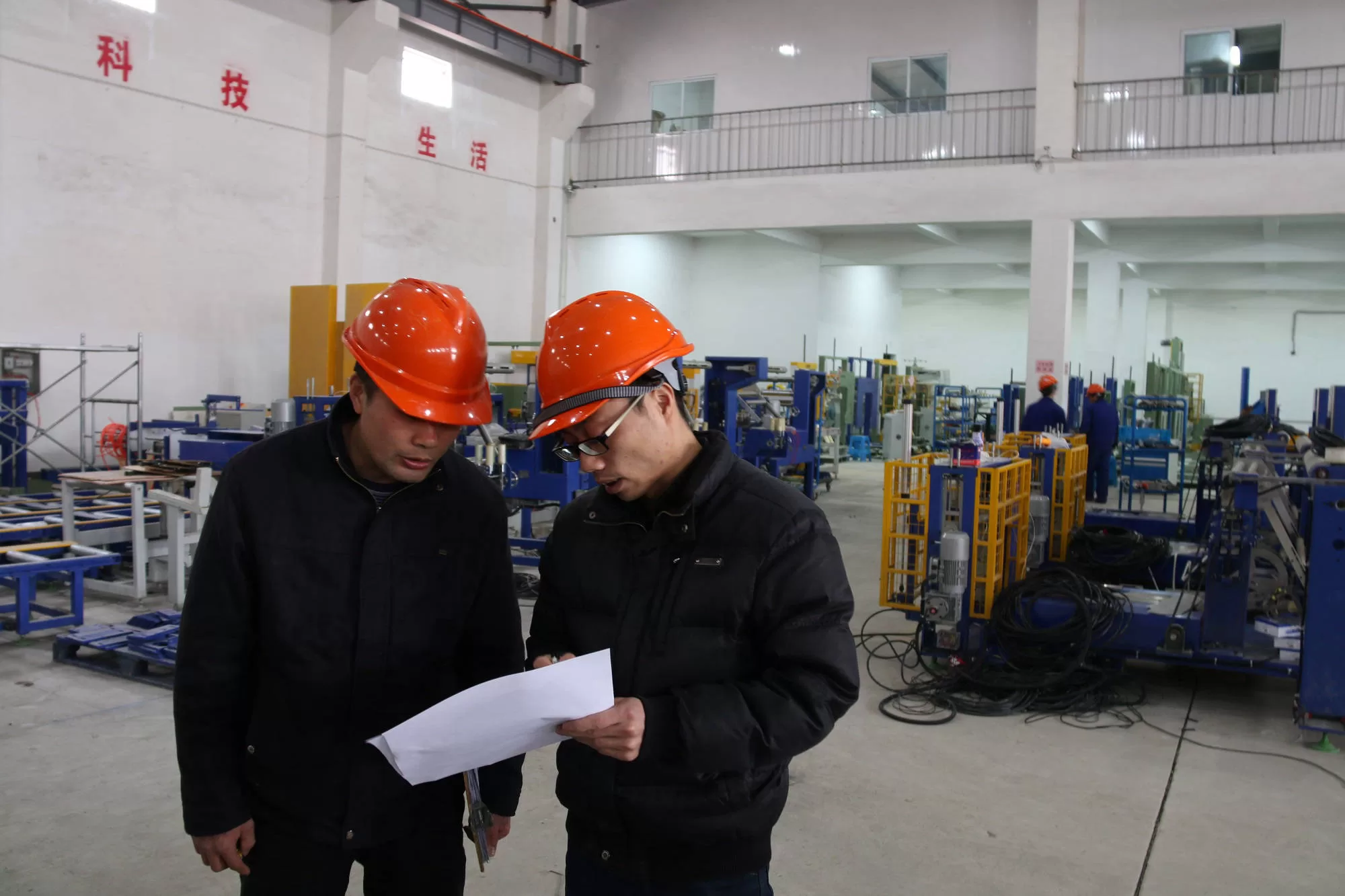
Get Your Best Solution !